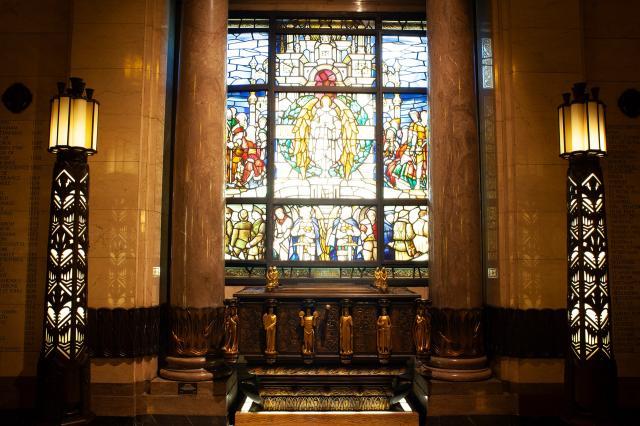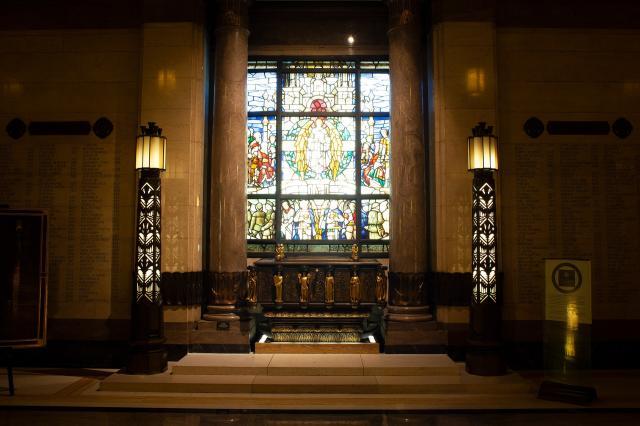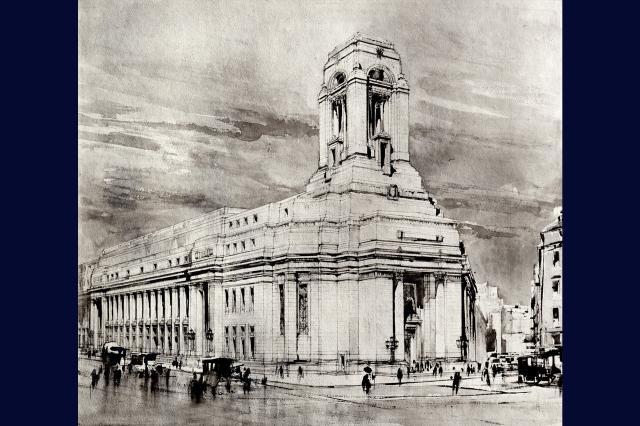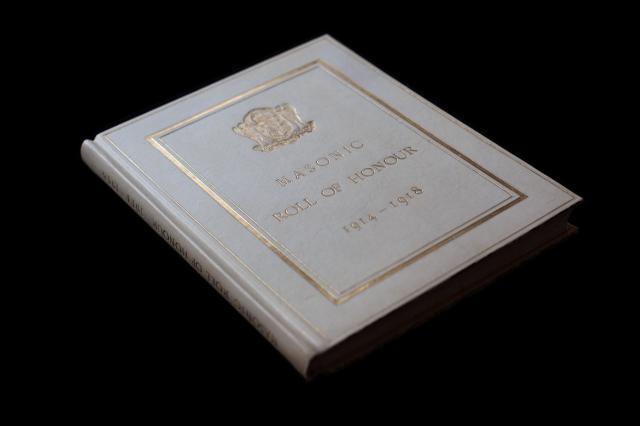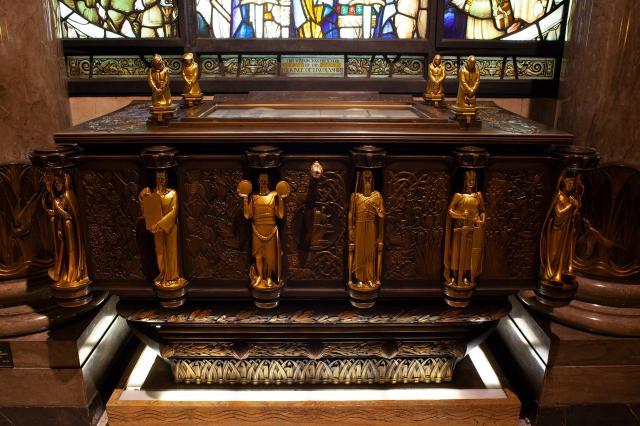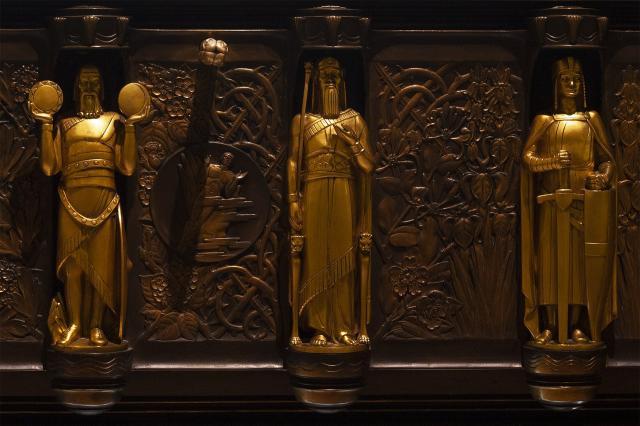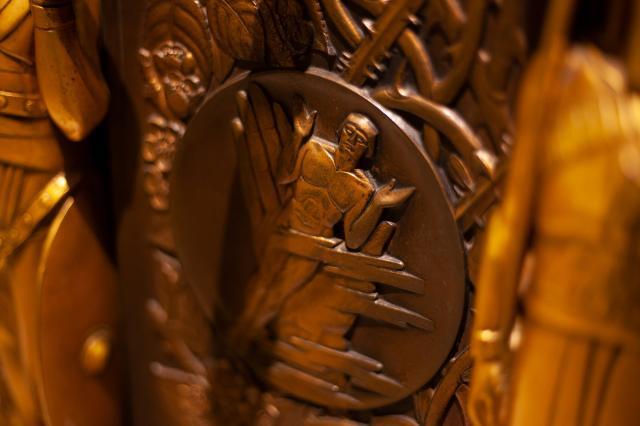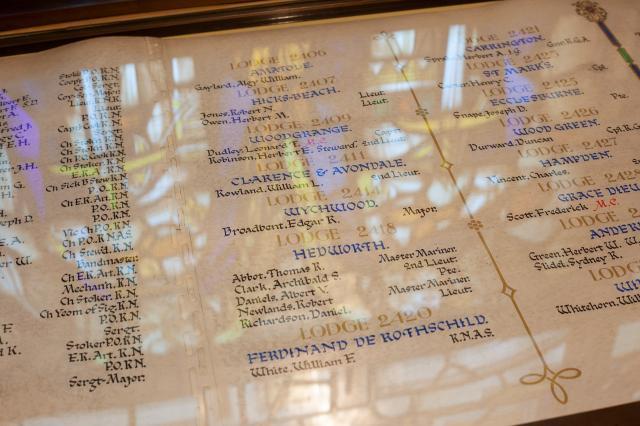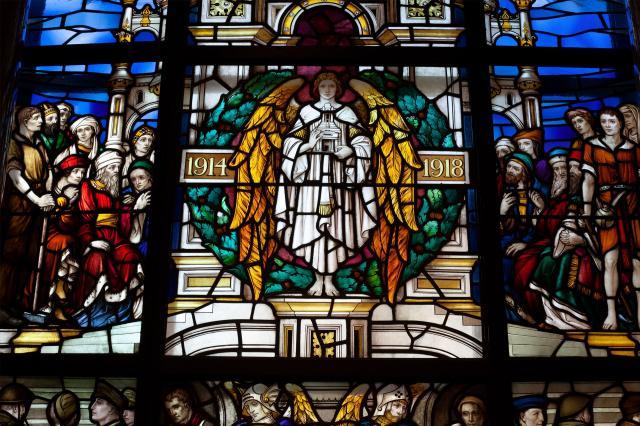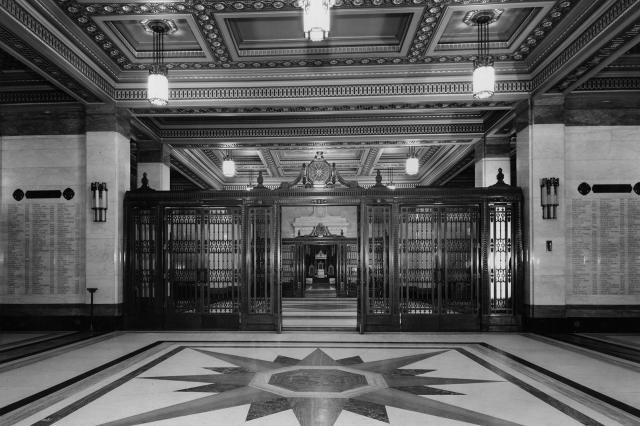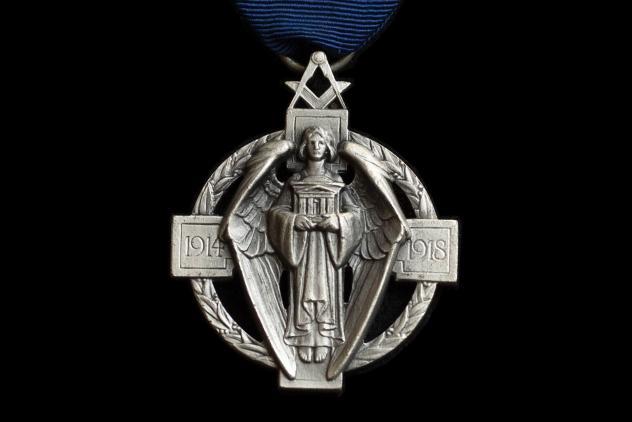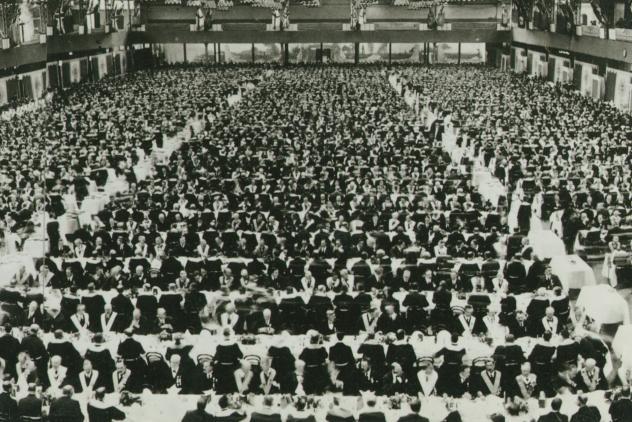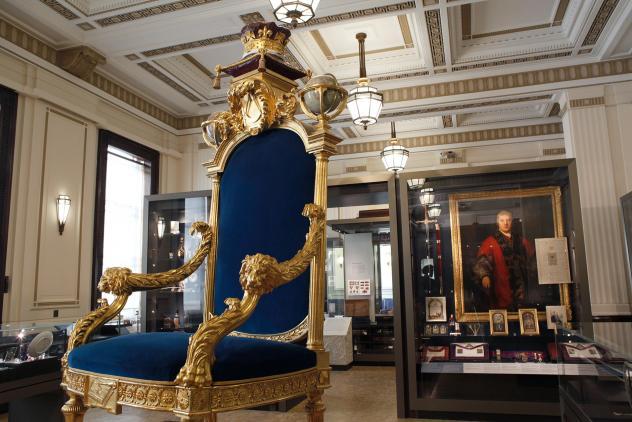What is the Memorial Shrine at Freemasons’ Hall?
The ceremonial area, known as a vestibule, found outside the Grand Temple at Freemasons’ Hall contains a special area commonly referred to as the Memorial Shrine. It is called this because it contains a bronze casket that houses the Masonic Roll of Honour. Above the casket is the enchanting stained glass Memorial Window.
How did the Memorial Shrine come about?
On 27th June 1919 a special Grand Lodge meeting was held at the Royal Albert Hall to celebrate the end of World War I. A message was read from the Grand Master, the Duke of Connaught, in which he requests that a permanent memorial be constructed “to render fitting honour to the many brethren who fell during the War.”
A competition was held to design a new building to act as memorial and a new home for English freemasonry. It was to be called the Masonic Peace Memorial Building. The winning design was by architects Ashley and Newman and building work began in 1927. The new Masonic Peace Memorial Building was dedicated in 1933. In June 1938, five years later, the Building Committee in its last report announced that it had given instructions for a Memorial Shrine and Roll of Honour to be placed under the Memorial Window. At the Grand Lodge meeting on 5th June 1940, by which time the country was again at war, the Committee was able to announce that the work had been completed.
What is the Masonic Roll of Honour?
The idea of a Masonic Roll of Honour was first considered by Grand Lodge in December 1914. It was proposed that the roll should give the names of those freemasons of all ranks who had laid down their lives in the service of their country.
The first list appeared in the Masonic Year Book for 1916. It ran for 30 pages and included over 500 names each listed under his lodge. Over 2,500 names had been recorded in the year books over the course of the war. By June 1921 the roll was declared complete and listed 3,078 names. A book was published and a copy was sent to every lodge. Copies were also available for purchase and we have original copies at the Museum of Freemasonry including a version with vellum cover and lettering in gold leaf.
The bronze casket in the Memorial Shrine houses a unique version of the Roll of Honour. It is a hand-decorated parchment scroll that can be turned by handles on the front so all the names can be read. It includes over 350 names not included in the Roll of Honour book, and additional lodge details for about 30 names already known.
What about the design of the Memorial Shrine?
The Memorial Shrine – and the huge bronze Grand Temple doors – were designed by the English sculptor Walter Gilbert (1871-1946). He is also responsible for the gates at Buckingham Palace and the Victoria Memorial in London.
Mostly cast in bronze, the overall design and ornamentation of the Shrine incorporates symbols connected with the theme of peace and the attainment of eternal life. It takes the form of a bronze casket resting on an ark amongst reeds; the boat indicative of a journey, which had come to an end. In the centre of the casket’s front panel is a relief showing the Hand of God set in a circle. In this hand rests the Soul of Man. At the four corners of the casket stands pairs of winged Seraphim (angels) carrying golden trumpets and across the front were four gilded figures portraying Moses, Joshua, Solomon and St George.
The Roll of Honour is guarded on top by kneeling figures representing the four fighting services: Royal Navy, Royal Marines, Army and Royal Flying Corps. On either side of the casket are bronze Pillars of Light decorated with wheat (for resurrection), lotus (for the waters of life) and irises (for eternal life) with four panels of oak leaves at their base.
The theme of the Memorial Window is the attainment of peace through sacrifice. Its main feature is the Hall Stone crest featuring the Angel of Peace holding a model of the Tower façade of the building itself. In the lower panels are shown fighting men from ancient and modern times, civilians and pilgrims all ascending a winding staircase towards the angel.
Can I visit the Memorial Shrine at Freemasons’ Hall?
The Museum of Freemasonry provides free guided tours of Freemasons’ Hall, offering you the chance to see first-hand the beautiful craftsmanship of the Roll of Honour and Shrine. If you have a family member who served in the war and was a freemason, why not learn more by registering as a Reader to access our Library and Archives or apply for Family History Search.
